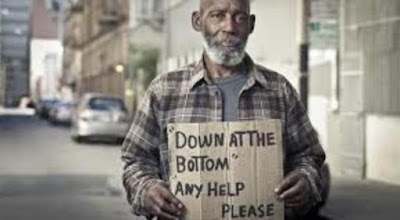Similarly, the online encyclopedia Wikipedia, defines homelessness as “the condition of people without a regular dwelling-people who are homeless are most often unable to acquire and maintain regular, safe, secure and adequate housing, or lack “fixed, regular and adequate night-time residence. The term ‘homeless’ may also include people whose primary night-time residence is in a homeless shelter, a warming center, a domestic violence shelter, a vehicle, cardboard boxes, a tent,” etc. The United Nations defines homelessness as “rooflessness.” This includes people “living in the streets without shelter”; and “persons with no place of usual residence…including dwellings, shelters, and institutions for the homeless or other living quarters.”
As of 2005, there were at least 100 million homeless people world-wide. There are currently, according to the National Law Center on Homelessness and Poverty, between 2.3 and 3.5 million people experiencing homelessness in the U.S.A. And, according to a 2008 study by HUD, in January of 2007, 671, 888 people experienced homelessness. The study concluded that about 58 percent lived in shelters and transitional housing while the other 42 percent were unsheltered. In 2010, another group, AHAR (Annual Homeless Assessment Report) found that 1,593,150 individuals were homelessness, of which 85 percent were single and 75-80 percent were male.
“NOW,” a PBS station found that the states with the highest rates of homelessness as of 2009 were: Alaska, California, Colorado, Hawaii, Idaho, Nevada, Oregon, Rhode Island, Washington State and Washington D.C. According to the Institute for the Study of Homelessness and Poverty, an estimated 254,000 men, women and children experienced homelessness in Los Angeles during some part of the year while, according to The Coalition For The Homeless, as of April 2015, there were approximately 59, 285 homeless individuals (including 14,132 families and 24,267 children) in New York City. Also, according to The Coalition For The Homeless, “the numbers of homeless New Yorkers sleeping each night in municipal shelters is now 72 percent higher than it was in 2005.
Keeping these statistics in mind, according to HUD and the United Nations, it costs taxpayers and the government between $35,000 and $150,000 per year to maintain one homeless person in the U.S.A. Similarly, it has been reported that in Salt Lake City, Utah, the cost for maintaining one homeless person for a single year ( although an isolated incident ) was one million dollars.
In states, however, such as Colorado, Florida, New York and Utah, where “Housing First” programs have been implemented to house and care for the homeless, these costs have been reduced significantly to, in some instances, as low as $7,000 per person per year.
Why is homelessness so expensive?
The costs of hospitalizations, including frequent use of the emergency room; use of the police to control the homeless including the incarceration of the homeless in jails and prisons; and the use of the shelter system including patronage of soup kitchens and food pantries by the homeless all adds up to, on an average, $40,000 per year per homeless person. With the cost of hospital rooms exceeding $2,000 per day and the salaries of physicians, nurses, hospital administrators, police, court officials, attorneys and social services staff growing annually, it is no wonder.
What is “Housing First”?
“Housing First” programs house the homeless first and then, using on-site supportive services, work to correct a host of problems causing the homelessness such as substance abuse, parole from jail and prison, mental illness, domestic violence, discharge from the military and loss of income, are cheaper to implement and use. Formerly, social scientist sought to cure these problems first. This delay was costly, and often, was responsible for an escalation of the problem(s) causing the homelessness.
With “Housing First” however, the immediate need is to house the homeless first, then help correct the contributing factors to homelessness. In Colorado, Florida and Utah the cost of maintaining one homeless person was reduced to $7,000 per year. In New York City, one nonprofit housing organisation was able to use a “Housing First” approach and reduced the cost of maintaining one formerly homeless person to a little over $16,000 per year. Although. $16,000 is more than double. $7,000 it is still much cheaper than $40,000 per year per homeless person.
In conclusion, while the shelter system and supporting social services ( medical services, clothing, transportation, food, recreation) are necessary for the millions of homeless people who depend upon their existence for their day to day survival, the sounder economic policy is to utilize an approach that offsets cost to the taxpayer while meeting the needs of the homeless.
#####
About the Author: Cleo Brown is the movie reviewer for HipHopRepublican.com. She lives in Manhattan and has a Master’s Degree in Contemporary African-American History from The University of California at Davis and has done work on a Ph.D. in education at The University of San Francisco. She has published several poetry books and is featured in Who’s Who in Poetry.

No comments:
Post a Comment